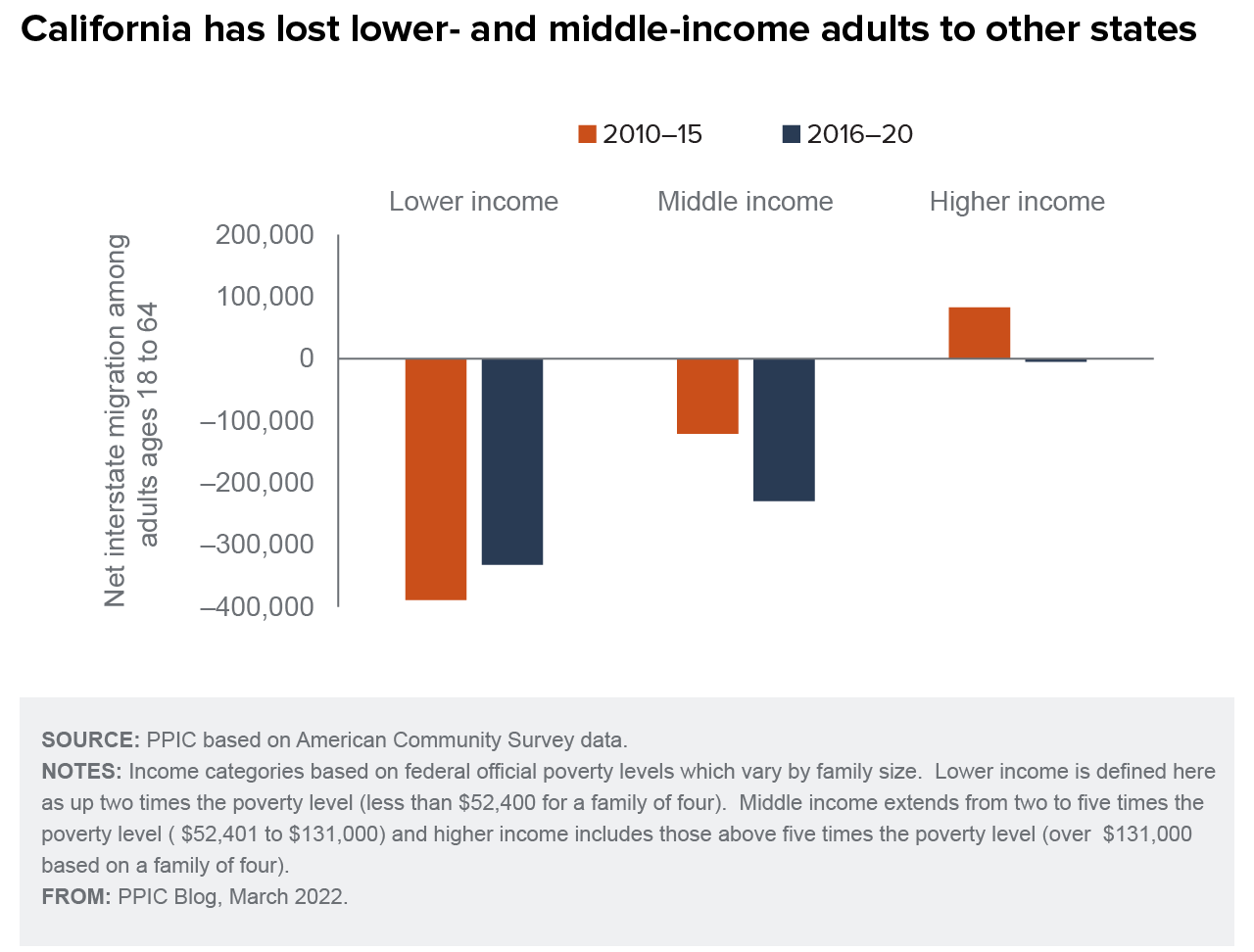300,000 people left California
California's Housing Shortage continues to price hundreds of thousands out of the state annually and the government isn't getting serious enough.
The U.S. Census has announced that they estimate there are 113,649 fewer people in California than last year. When focusing on domestic migration only, an estimated 343,230 Californians have left the state since 2021. Note these are their population estimates which generally show correct trends but can have low accuracy, while their decennial official population head counts occur only once every ten years.
The media narrative is that this is due to California’s COVID-19 restrictions and liberal policies, but this is largely speculative. Not only has there not been any lockdowns or mask mandates of significance in the past year to warrant an out-migration of that level, but California has been losing its population for years prior to the pandemic.
The big California exodus started around 2000 and became particularly notable several years ago when foreign and higher income in-migration slowed. Now the out-migration is pronounced enough to reduce the state’s overall population. Public Policy Institute of California in an earlier blog post used Census data to reveal the migration impacts by income over the last decade.
The truth is that the people who are leaving California are overwhelmingly low and middle class, while the shrinking few who are entering the state are wealthy. Coupled with statistics showing that California’s housing supply per-capita is the lowest out of 49 states except Utah, and that the state has the lowest vacancy rate for housing of any state in the union, the reason for the exodus becomes clearer. Similar trends are happening in New York state as well — with New York, California and Illinois leading the nation in absolute population decline.
Southern states building tremendous amounts of housing — albeit suburban sprawl — like Texas, Florida, North Carolina and Georgia now lead the country in population growth. They are particularly attractive to middle class Black and Hispanic Californians seeking affordable homeownership. Meanwhile, Democratic-run blue states like California and New York continue to hemorrhage their population despite the prevailing liberal tolerance about welcoming outsiders and being a refuge for the marginalized.
Population shrinkage also affects Congressional representation, as everyone is keenly aware. California already lost one seat for the first time in history based off the previous population declines in Census 2020. With the latest population drop, some analysts predict California is projected to lose five Congressional seats by 2030. This is probably an exaggeration though, as more accurate Census counts by 2030 may show more tempered population decline.
Some people have suggested that despite the cause being awful, California sending more people to other states is good for flipping those states Democratic. Again, it’s quite silly to celebrate people being unable to afford to live in a state with the most job availability and upward mobility in the world. But it’s not clear this is a reliable trend. Florida has solidified itself as strongly Republican during the low turnout midterms, and Texas is not yet on the verge of being flipped Democratic. Moreover, Texas political analysts are noting much of the blue trend is by incumbent Texans rather than new residents. While it is true that states like Georgia are trending blue, this can generally be explained by exhaustive voter turnout initiatives in states with highly disenfranchised populations rather than migration patterns.
Meanwhile, it’s easy to connect California’s hostility to affordable housing with its population decline. California accounts for 41% of the nation’s million-dollar home supply. Californian metros dominate the vast majority of any “most expensive rental market” rankings list. California, despite being only 12% of the national population, accounts for 30% of the homeless population and 50% of the unsheltered (i.e. street-dwelling, often most visible) homeless population.
There simply isn’t enough housing, a fact which is becoming ever clearer to policymakers and politicians in California. Though known for decades by researchers, the idea California even had a housing shortage had been disputed as recently as the late-2010s by many politicians, pundits and political groups. There are still a few hold outs today, but those voices are shrinking or changing their tune as the overwhelming body of research forces people to reconcile with the indisputable issue of the housing shortage.




Huh. The stat that Utah has such low housing per-capita is interesting. Is that just because of big families? Maybe not... I just pulled up their vacancy rate, and it's quite comparable to CA, much lower than rust-belt states like Ohio or Michigan.
https://fred.stlouisfed.org/graph/?g=Y9tN
I think ignoring the fact that California has gained population from immigration from overseas only shows half the picture here. I would particularly be curious about the education and income levels of new immigrants.